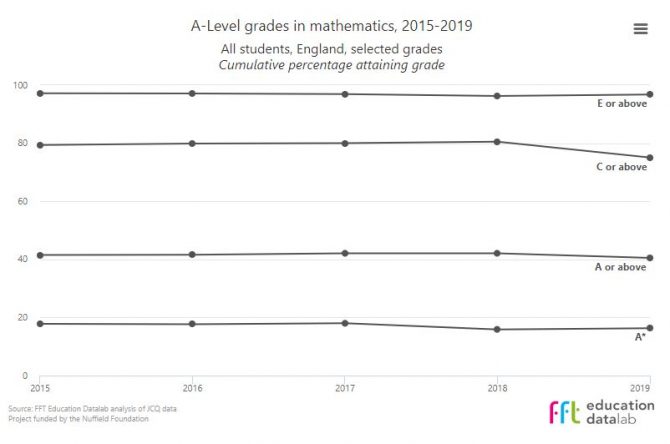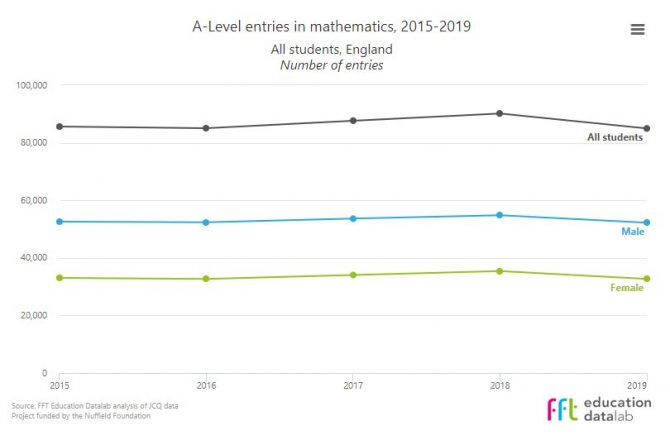These are the trend tables for A-level maths in England, 2015-2019.
Compiled by Education Datalab, the tables show entries in maths have decreased slightly, falling from 90,189 last year to 84,965 this year.
The proportion of pupils achieving an A* has increased slightly to 16.3 per cent, compared to 15.9 per cent last year. However, the proportion getting an A or A* has fallen, from 42.1 per cent to 40.5 per cent.
A leak of grade boundaries yesterday caused concern at the low threshold for achieving an A in maths this year.
Across the whole of the UK, a greater proportion of pupils achieved the top grades in maths in 2019 compared to all A-level subjects. A total of 41 per cent of pupils achieved A*-A grades in maths compared to 25.5 per cent for all subjects.
Ofqual has said changes in achievement, particularly at grades B, C and D, is likely to be a reflection of the “small shifts in the aptitude” of this year’s cohort, as well as “significant changes” to the structure of the A-level maths qualification. This is the first year that every pupil took the new A-level exam.
For other subjects, visit our main subject tables page.
A-level maths results: England

A-level maths entries: England

For our own analysis, you can read about the 5 key trends in England’s data, to find out which subjects are increasing or declining in popularity, or our stories on girls overtaking boys in science and Spanish becoming the most popular language.
You can also read our headline story on the slump in top grades, with the proportion of pupils getting A or A* reaching its lowest level in 12 years.

Your thoughts